 By Chris Hector
By Chris Hector
The man is a phenomenon. An artist and a teacher who has changed the face of the showjumping world. There is scarcely a top rider in the United States today, who has not studied at the feet of the waspish New Yorker – George Morris. Four out of the five members of the Gold Medal team at the Los Angeles Olympics were Morris pupils – and the current top combination on the world scene, the group they call ‘George Morris’ all girl team’ of Anne Kursinski, Katharine Burdsall, Joan Scharffenberger and Katie Monohan Prudent is proving over and over again the George Morris dictum that good, stylish riding is effective competition riding.
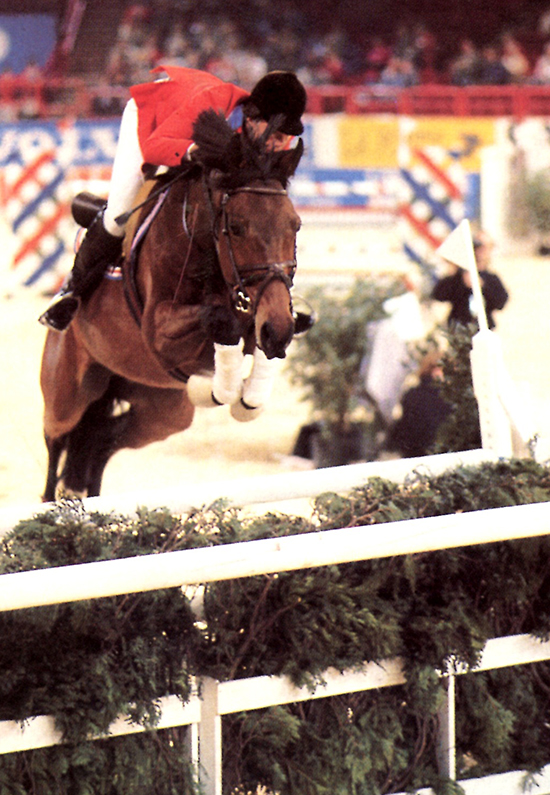
The Morris’ style! Lisa Jacquin and For the Moment, and below: Joan Scharffenberger and Winnipeg
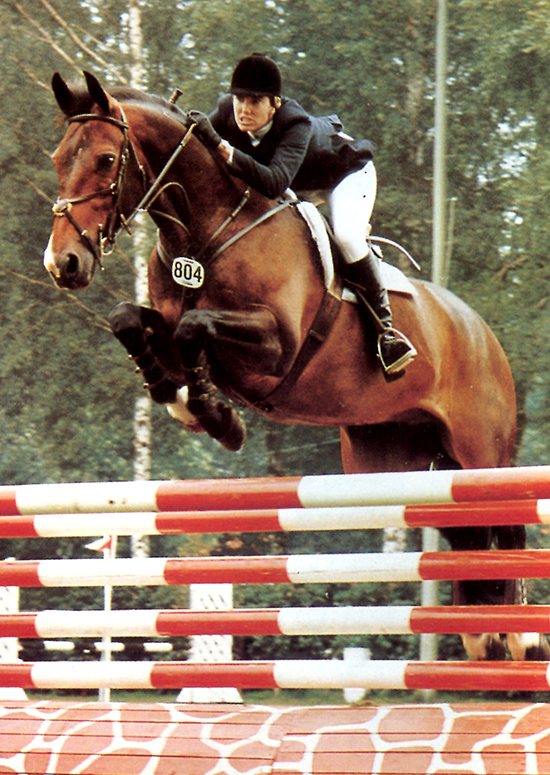
The link between style and success has been well established in the United States (or many years. It is a lesson George learned from his first great teacher:
“I was very lucky when I was young I lived relatively near to the man who was at the time the greatest American jumping teacher, Gordon Wright. He came out of the cavalry at the end of the war, and has written many books. He lived about half an hour away from where we lived when I was about eleven and I started riding with him.”
The story continues below the advertisement…
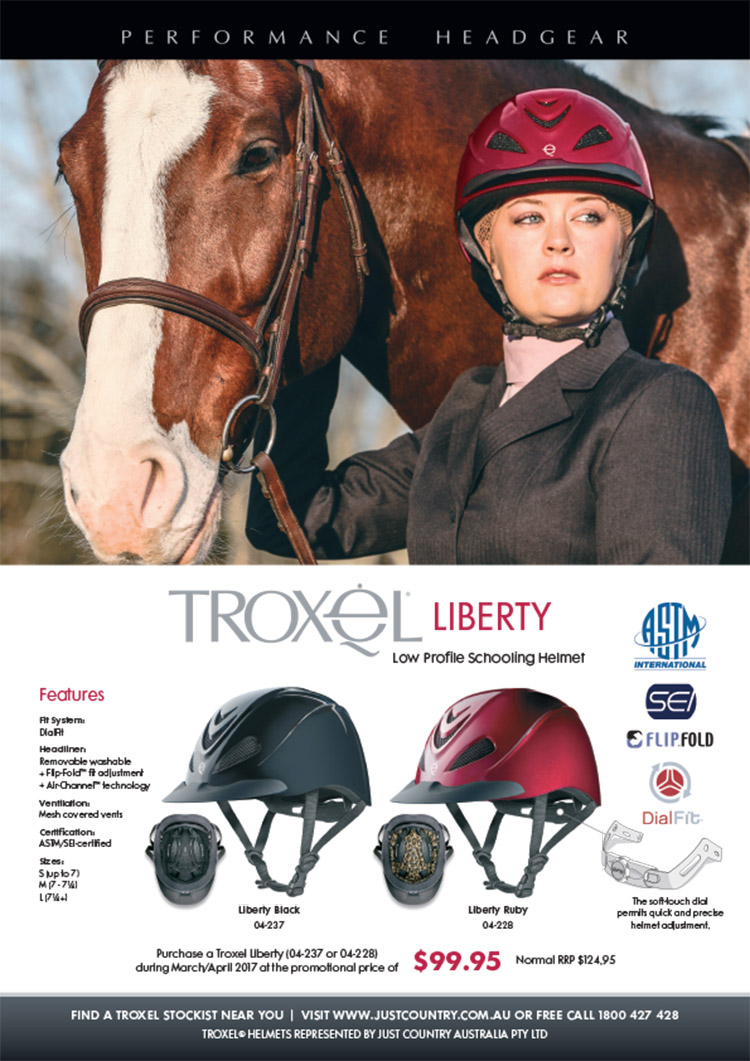
That first break opened new doors – paths to other great horsemen…
“Because of that piece of luck, I did very well showing early and got on the American team at a very early age. On the team, I worked with Bert de Nemethy, who was a world master of cavaletti, gymnastic and dressage work – he was the coach of our team. I was lucky again because in the winters, he had me go to a man called Richard Watjen, one of Germany’s great pre-war dressage trainers. I also spent one summer in Mexico with Mariles Cortes, he won the Games in ’48 and he was a genius. After the Olympics in Rome, I went to a guy called Gunnar Anderson, who is a dressage trainer living in the States.”
“So at a very early age I was lucky to be near some very great horsemen. They were my principal teachers.”
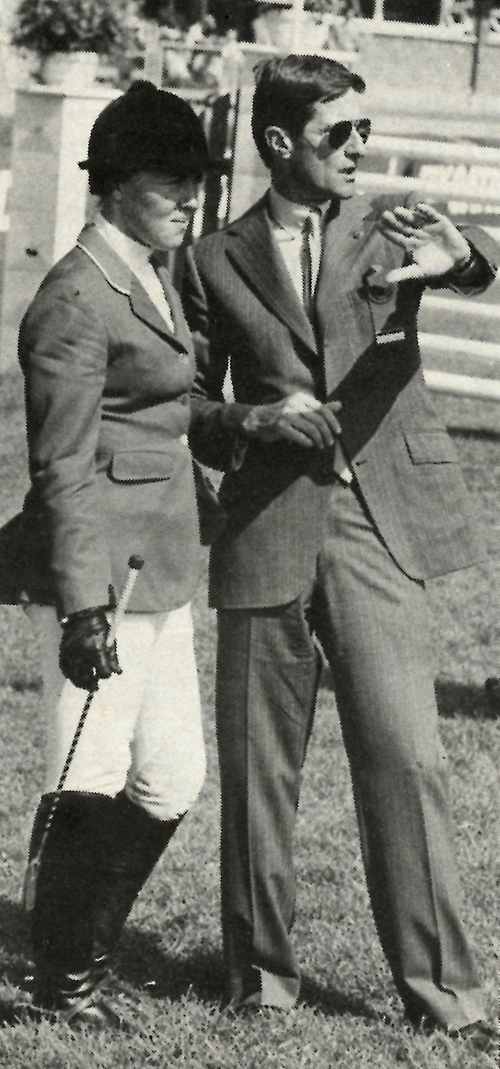
Melanie Smith and George Morris
In America did the riders always realize that there was a very close connection between very good flat work and good jumping?
“Gordon Wright started that idea in the States, along with a Russian horseman who settled there, Vladimir Litteur. We’ve always had a good mentality of horsemen in America, with racing and fox-hunting, the attitude is very good, it has the horseman-like approach of England, but with a little more of the technical, methodical approach of the German mentality – and the sympathy of the French mentality. I like the American horseman’s mentality – I always have.”
Advertisement:

Presents – Balou du Rouet – the Fusion Stallion! Balou combines the great French blood of Baloubet du Roet, with the cream of German breeding from the incomparable, Contender. Balou is the sought after modern style of jumping sire, and he has already sired some of Europe’s leading showjumpers.
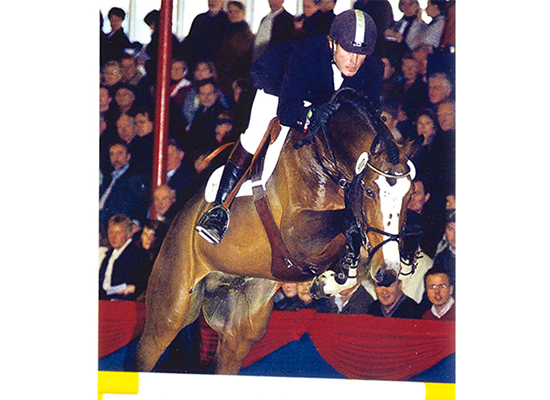
For more information about Balou de Rouet go to International Horse Breeders – he is he ideal sire for your next showjumping star!
“De Nemethy really fixed any thought that jumping and dressage could be separated – because he was a great flat rider, and a great cavaletti trainer – bridging the connection between the flat work and the gymnastics. Amongst jumping riders there are different degrees of interest in flatwork. I would say as a jumping trainer I am at the top of the scale, there are not many who like the flat work any better than I do. Take Conrad Homfeld and Michael Matz, they are great keen flat riders – then it drops down. We have riders who might go through the motions on the flat, but they are not really interested, they don’t really realize how important it is – but the good ones do.”
“Some people in the States feel that I am too pedantic, too much interested in dressage. Many in the dressage community would like me to give clinics in dressage, but I am too busy, more interested in dressage for jumping. I’m not interested in dressage as an end in itself.”
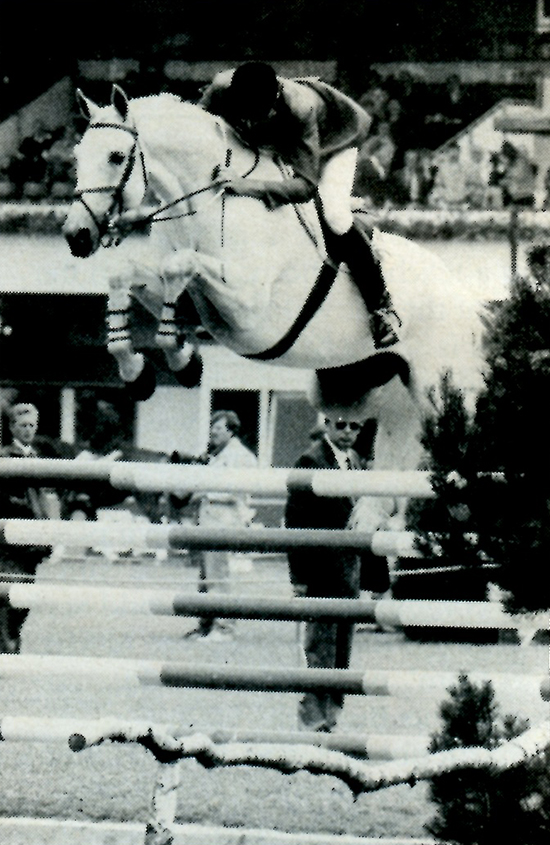
The pupil at work! Conrad Holmfeld and Abdullah.
Do you see yourself as a competitive rider – or a teacher?
“Oh as a teacher. My priority hasn’t been riding since 1960. I think I’m more gifted as a teacher. I’m a very good rider, still a very good rider in competition. I won a class at Madison Square Garden last month, and I was second at Spruce Meadows – the biggest show in the world – just before that. So I’m still a very good rider, but my greatest gift and greatest contribution is as a teacher.”
Certainly ‘being a teacher is something that George Morris appears to enjoy – even if, at times, some of his students find him a good deal less than enjoyable. One member of the Australian Olympic long list suffered the indignity of being banished from the group. “Is there one thing this boy can do right?” demanded Morris – before deciding that whatever he could do, it wasn’t going to be done in his clinic.
But he was equally quick to warm to the student who really was prepared to try. George Morris is a great one for setting distance problems, for giving riders the option of the short or the long stride, of letting the jumps and their relationship be the teachers. At his Olympic squad school, he set a line of jumps and informed the pupils that they could be ridden short four or long three, short five or long four. The first few riders took the nice safe short stride option, before that magnificent young man on the flying machine, Gavin Chester wound his horse up from back on the fence and set sail flat out for the line, determined to jump off the long stride or die in the attempt “I like the boy!” came the instant response.
At his Olympic Squad clinics, George was sure he detected a change in the attitude of the Australian riders…
“Oh yes, yes, there’s always a change – even the ones who don’t admit to it, or resent it, or pooh pooh it. Even if they don’t know they’ve changed – they have. Of course, the ones who accept it, and like it, and admit to improving, they improve a lot. Now in Australia you always need more association with the outside world. You have to develop your own teachers, you must have clinics. You must send your riders to horse shows and events in other countries … reading, anything you can do to associate yourselves with progress.”
Advertisement:

Presents Diarado. He was a sensation right from the time he was crowned Champion at the Holsteiner licensing. A horse that combined technique, scope and charisma, and that is not surprising, his sire is the WBFSH Number 1, Diament de Sémilly, his dam is by the great Corrado, and his grand-dam by Contender. Simply the best of the best.
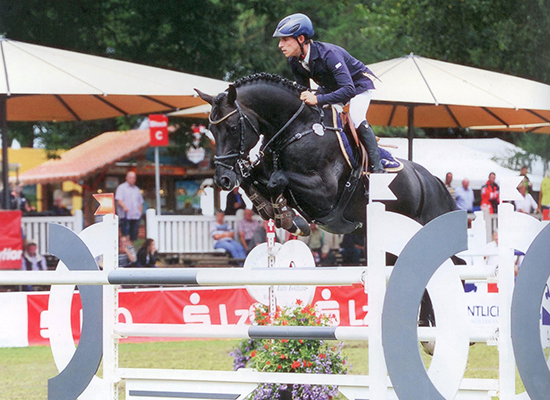
For more information about Diarado go to International Horse Breeders – this is one young stallion with a great future…
There were some (notably unsuccessful) showjumping riders who were unimpressed when George taught in Australia for the first time. He had nothing NEW to offer, no magic gimmicks to sure fire success. And they are at least partly right, for the essence of George Morris’ horsemanship is age old.
“The methods I teach have stood the test of time, not only with me, but with many other trainers. If you try to circumvent a problem with a trick or a gadget or a funny technique, the problem will always come back.”
At the schools at the VEC it was an entertaining sight to see the group of showjumping and eventing riders riding basic dressage movements, oh so seriously. Lengthen the stride on the long side, collect a little on the short, now some shoulder in, now change the rein across the diagonal – this last produced mass confusion, but there was no doubting the intention of the exercises, nor the attention of the teacher to detail!
Slip a finger over the rein, slide your foot just a fraction further into the stirrup, roll the hands over for just a second – and detection, and correction was instant.
The position of the foot was crucial.
“My weight belongs in my heels, not in my knees. What keeps the stirrup in place is not pushing down into the irons – it’s the weight driving down into your heels. It’s better to have reins that are too long rather than too short, and better to have stirrups that are too short than too long.”
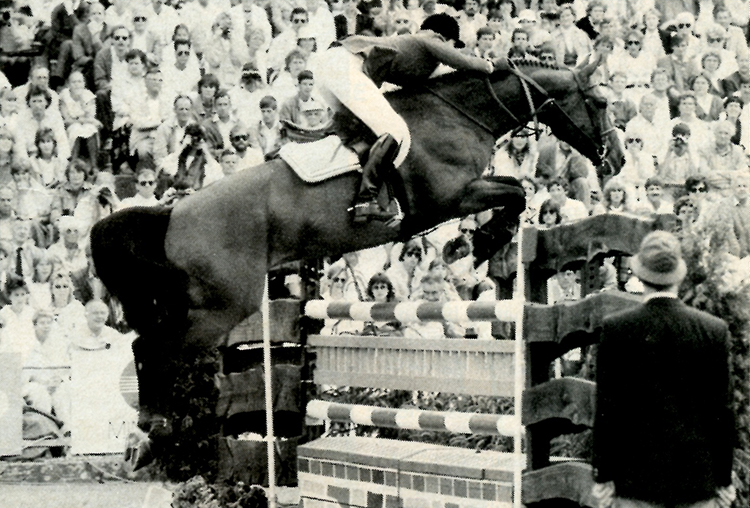
World Champions: Katharine Burdsall and The Natural – products of the equitation system
All the time, George was pushing the riders to get their horses more under control, more in tune…
“If I have a very excitable horse I go slower and slower until I get regularity. People talk a lot about rhythm, but it’s only regularity. All your horses are on the muscle. They need lots of walk, sitting, rising trot transitions.”
With the little shoulder in movements, with the emphasis on nice smooth transitions, the riders were encouraged to get their horses rounder.
“All people do the wrong thing with a high headed horse because it’s a natural reaction to drop your hands when the horse goes high. DON’T. When the horse raises its head, follow him up a little and show the horse the way to lower his head.”
“If you try to pull his head down, then I can come back in twenty years and his head will still be up!”
George had already spotted a number of faults that characterized our Australian way of riding:
“I’ve been trying in Australia to get rid of hollow horses. There are riders who sit too far back in the saddle and hollow the horse’s loins. Those who sit back in the saddle have to consciously move forward.”
“I never saw a country where less respect is paid to training horses. Your horses go with their heads to the outside and their bodies to the inside. It’s not your jumping down here that is the problem – it’s your understanding of training and dressage which is so poor. Don’t give me this hogwash that the horses are too hot to handle. It’s just that the training is so poor.”
“You don’t need jumping in Australia, you need riding.”
“Ride with your thumbs up! There is a funny habit in Australia, where you invert your thumbs. Your hands are not just flat, they are past flat, they are inverted. The thumbs should be up.”
If our rider’s hands drove George to distraction, the habit of kicking horses to get them going sent him wild!
“You don’t kick in riding. It’s wrong. Kicking de-sensitizes your horse to your legs – and every time you take your leg off the horse to kick him, you jeopardize your security. Squeeze the horse, and if he doesn’t go forward, tap him with the whip. When a horse is schooled to legs, you don’t need legs, you just think legs.”
“Before you can understand hands, you have to understand legs. You can’t do much with hands until you have legs that are independent and soft.”
“Never ever kick the horse – that’s for the birds. In serious training we always carry a stick – not to beat the horse, but to support us.”
“I don’t kick horses. If I want more than leg, but less than a whip, then I’ll click to the horse. It’s a nice aid, clicking gives the horse some heart.”
“All over the world they teach riders to have a tapping, living leg. It’s a dreadful thing, a deadening thing, to be at the horse with your legs all the time.”
“The lesson of legs is through your whip – not through your legs.”
“Eighty percent of your time on the horse should be dressage and only 20 to 30% jumping. In Australia, I object to your education – not your guts, or experience or athletic ability – your education. I grossly object to hollow, hollow horses that jump upside down and hit their jumps.”
“Down here you people jump better than you ride.”
“Ask yourself – what originated style? Function! Function gave us form. If you teach good form, you get function. Why do we put the stirrup on the ball of the foot? Because it creates a softer, more effective ankle. We do it NOT to look better, but to DO it better.”
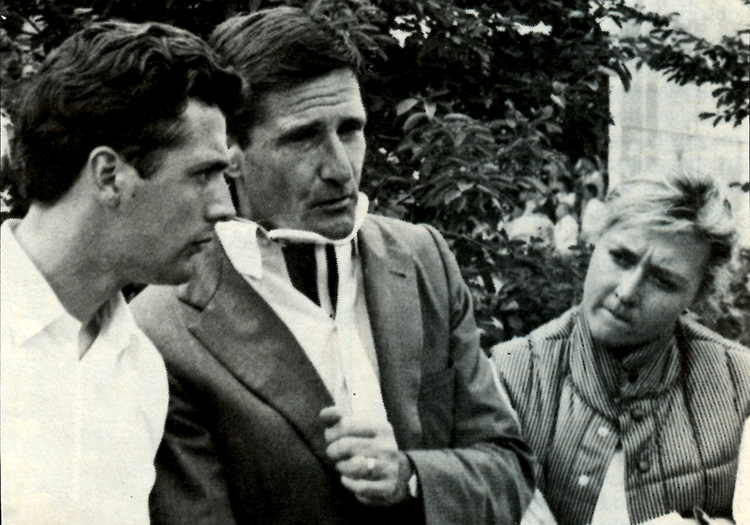
Even the mighty can have the occasional crash! George in a neckbrace after a fall at Hickstead with Jean Claude Vandenburge and Susanne Bond-Leone
The connection between riding well on the flat and over jumps was emphasized.
“The rising trot is the same as jumping a fence – the horse is throwing the rider out of the saddle. If you get it wrong posting the trot, then you are going to get it wrong over the jump.”
And we learnt there was posting and posting…
“They’ve taught you to bring your stomach forward in rising trot. I don’t like that. Get into position and let the horse do the work. Sink into the saddle and as you come down, open your hip angle – and your upper body comes close to the vertical. When you rise, close the angle between your hip and trunk. Let the horse do the work and see how little you have to do. When I say sink that means soft – come back into your horse’s back nice and soft.”
George does not agree with much that is taught in modern dressage – particularly the ‘tendency to use both leg and hand aids simultaneously.
“Do your half halts with your hands not your legs. Always use legs without hand, and hand without legs – that is a very old principle of the French School.”
“There are five rein aids: the direct rein, the indirect rein, the leading or opening rein, the pulley rein and the neck rein.”
“Legs, the rider can learn in three or four years – hands in thirty or forty years. There are good hands, bad hands, no hands and educated hands. I’ve taught tens of thousands of riders – and I’ve only ever had one pupil with educated hands… I won’t say which one.”
“Riders with bad hands are just butchers on horseback. In these clinics we aspire to good hands.”
After half an hour or so, George judged the riders, and their horses, sufficiently in tune to try a little jumping. But first riders were quizzed – what was the cardinal sin in jumping?
“The cardinal sin in jumping is hitting the horse’s mouth. That is the worst thing you can do to the horse. The second worst thing is hitting him in the back with your seat, and the third worst thing is swinging your legs back into his ribs.”
Morris has pioneered the crest release – both the short and the long release, where the rider’s hands are steadied on the horse’s neck George was quick to stress that it was not sufficient just to throw the hands up the horse’s neck and just as quickly pull them back:
“Rest and press your hands on the neck. That way you’ll get rid of the rotation when the hand comes back. Push the knuckles down and let the horse out of gaol! In the long release, put your hands half way between the withers and the ears. In the short release press your hands just in front of the withers.”
“If you hit the horse in the mouth with your hands you produce a horse that chips in on a short stride… then a stopper.”
“Instead of jumping in front of the horse with your upper body, let your hands do the work. Riders are jumping ahead of their horses because they do the work with the wrong part of their body. Move your hands – there is not a lot of work for the body. It’s very hard when you are riding a horse to do nothing. That’s the most difficult thing of all. The first step to timing is to be able to relax. Wait for your horse – wait for your jump.”
“You have a habit here when you are coming to a short distance of starting to hook, instead of waiting and letting your horse find his jump.”
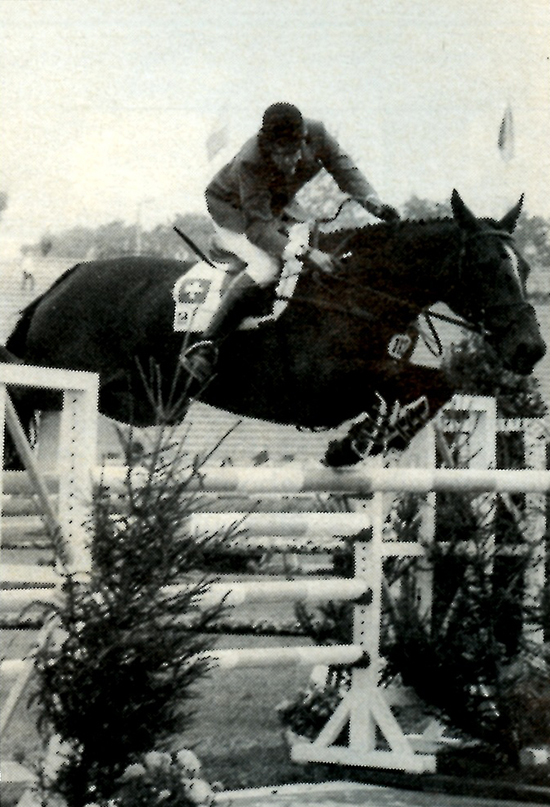
Swiss student, Thomas Fuchs and Tullis Lass
If it was hard work for the riders, the horses had their share of learning curve to cope with too. Much of the schooling concentrated on making the horses think and learn for themselves. A false ground line behind the jump, and the poles were quickly corning down.
“That’s alright, I like a horse being stupid and green and hitting the jump. There is nothing so nice as a horse that has learnt to help himself. The Canadian showjumper, Ian Millar rides his horses out of balance in training. He does everything wrong to make it hard for them at home – in the Show Ring he rides like an artist. He is the best in the world today.”
Riders were encouraged to leave the horse alone and let it draw to the jump…
“As the jump gets wide, let freedom make it easy. Have the horse free and relaxed, gallop nicely to the jump and use very little hand. But when you ask him, go with him – never lie to the horse. Never ask him to jump and then not go with him.”
“Relax and trust your eye and give the horses scope. Get the scope from the horse’s gallop. I don’t like too much checking and ‘hand riding’. Hand riding comes from being excessively protective of the horse’s front end. Let the horse learn about his own front end and the hind end will also improve.”
“In the lower grades of showjumping I’ve seen in Australia, 70% of the faults come from behind. That tells you a lot about the rider’s hands. They are inverting and hollowing their horses. Don’t grab with your hands. Don’t try and force the distance. You can’t make distances that aren’t there appear. You’ve got to soften and wait for the distance to appear. When you see your distance, I want the leg very passive – don’t attack the distance.”
“Here in Australia, you’ve got better horses than your training.”
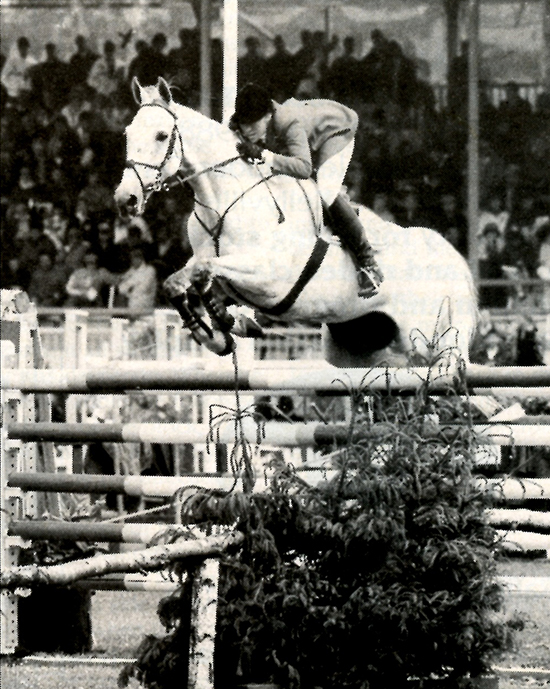
One of the US model ‘Morris’ superstars, Katie Monohan-Prudent
It was an amazing process to watch. George Morris is the master of setting up a line of jumps that will ask exactly the right questions – of creating a learning situation for both horse and rider.
“Give to your horse, let the horse study the jump, let him learn to bascule.”
And suddenly it all happens. The rider sits quiet, the horse rounds itself beautifully through the air, clears the jump neatly and cleanly – and the teacher is delighted:
“There you saw it. You did it. If you don’t like the first stride you see, sit still and bypass it, and take the short option. If you see a long option, a short one will come up. Relax your hands and arms and you will see it better.”
As might be expected from one who has spent a lifetime teaching, George Morris has an endless supply of exercises for his students. They are instructed to bridge the reins and take them in the outside hand, grasping the mane halfway up with the inside hand, and then standing in the stirrups – first at the walk, then at the trot.
“It’s a wonderful exercise for the rider to make the seat lighter, to put the weight in the heel. Watch me jumping. My seat is up, and then it is down – but be careful, when your seat comes down, it is like your leg or your hands, it must be tactful. When your seat is up, then your weight goes into your heels – not into your toes or your knees.”
Some of the exercises were even more entertaining. George would stand next to the wing, holding his hand up, and instruct the rider to look at his hand – on the approach, through the air, on landing and through the next corner.
And woe betide the rider who peeped down at the track!
Or instructing the rider to put their hand on their head, behind the back, on the hip – all in rapid succession, and all while the rider was sailing over a fair sized jump.
The lessons were taxing, exciting and ever so productive. At the end of the school, there was a queue of pupils coming to thank this master horseman who has so kindly given Australia’s riders the opportunity to share his wisdom, to benefit from his finely honed teaching technique. It was a rare privilege just to sit, and watch and listen… but at the end of the day, George Morris makes it quite clear that the ones who will really benefit are the horses.
“I’m interested in rider’s technique because I think it makes life easier for horses. Horses suffer when they are badly ridden – and the better the rider, the nicer the horse’s life.”
This article first appeared in the April 1988 issue of THM.
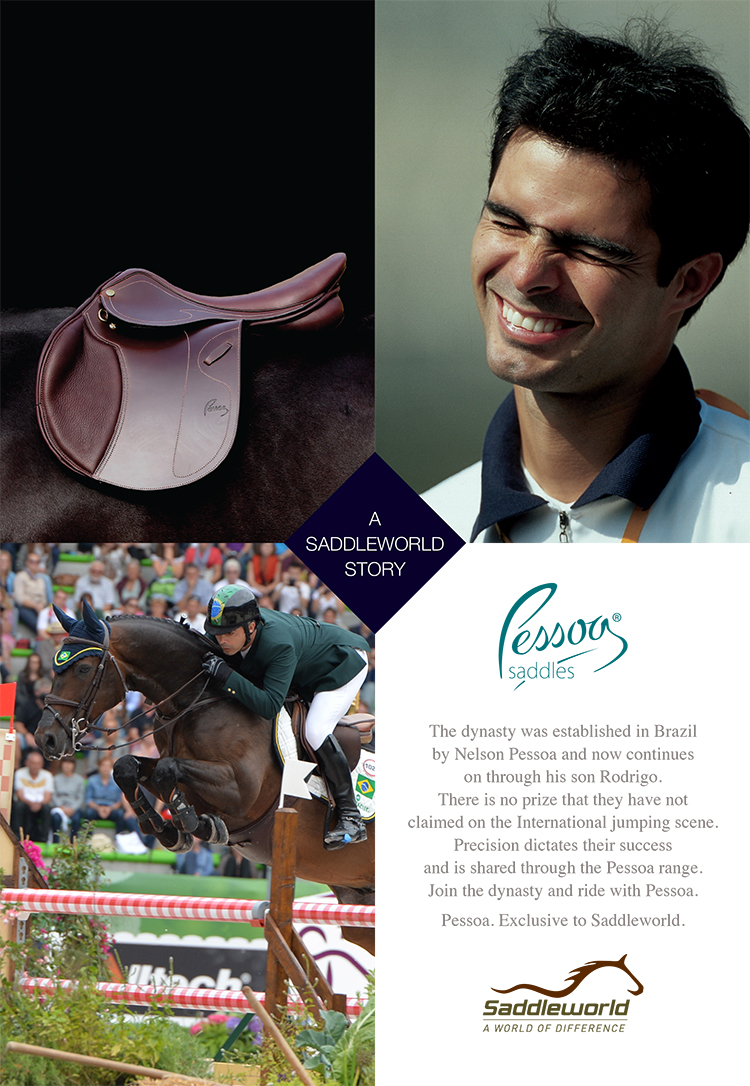
Visit the Saddleworld website…
If you like showjumping you should check out our library of showjumping articles:
http://www.horsemagazine.com/thm/article/show-jumping/



No doubt about George. This year he talked about good hands bad hands educated and no hands.The message is still the same do it well so it is easy for the horse.